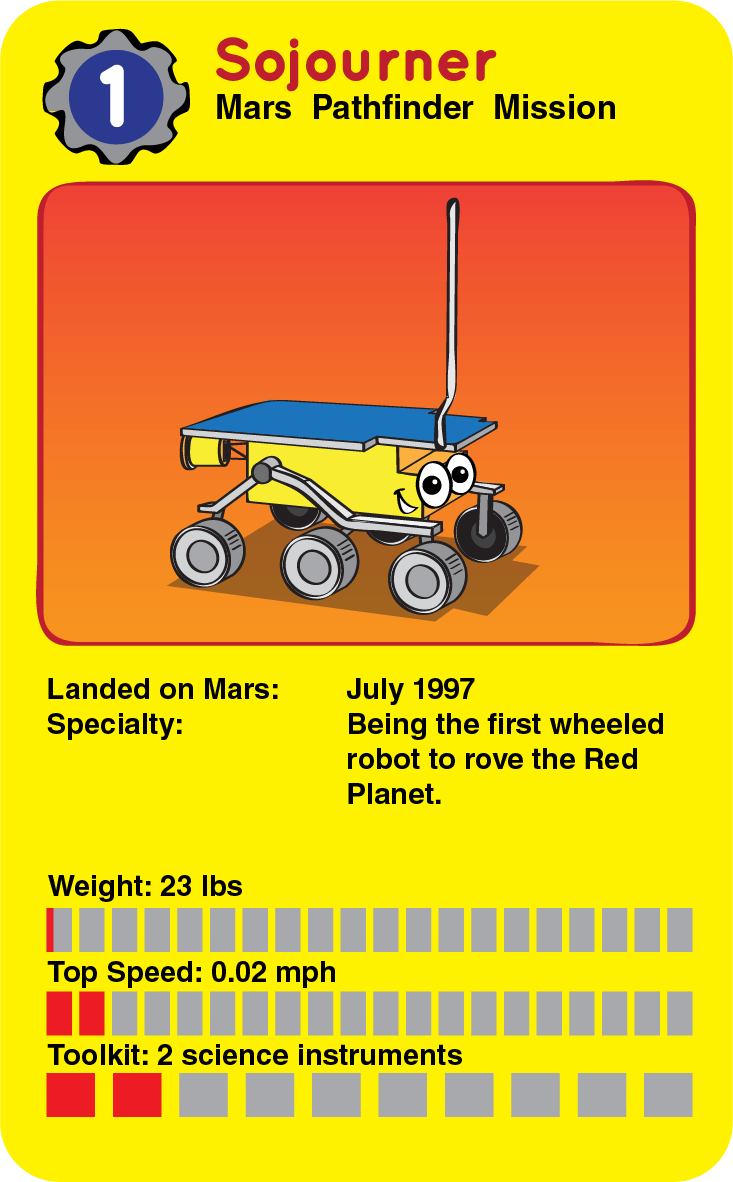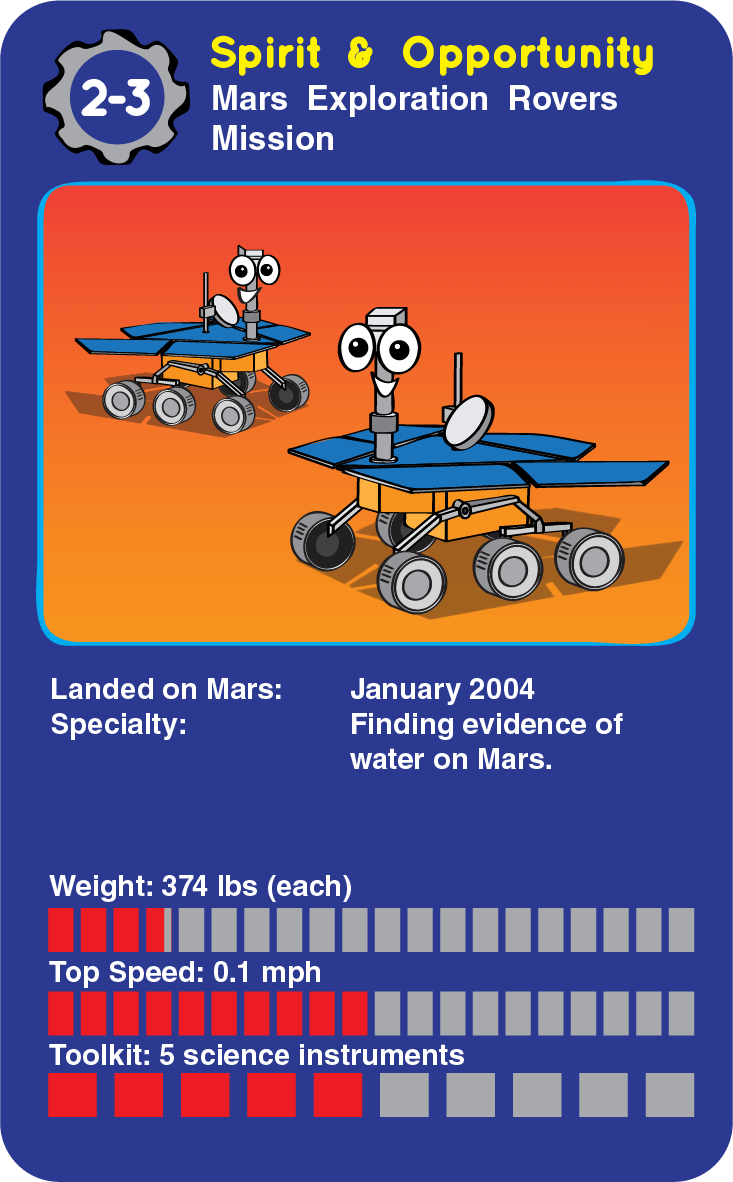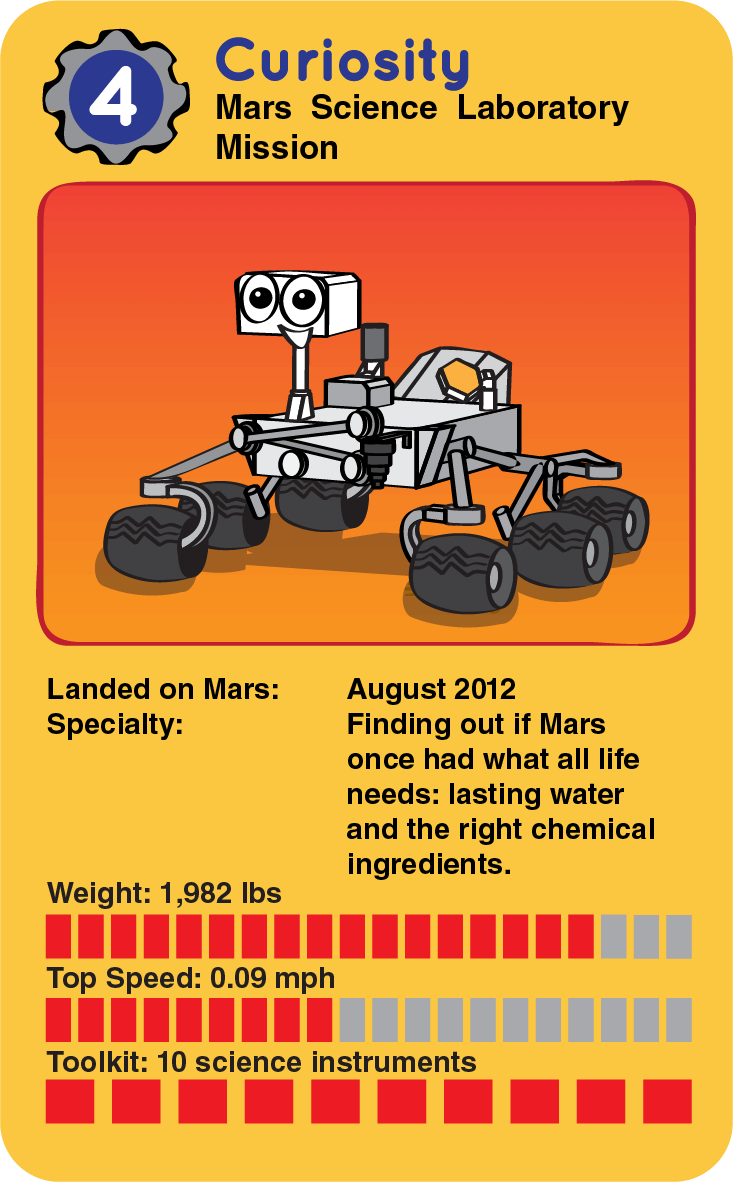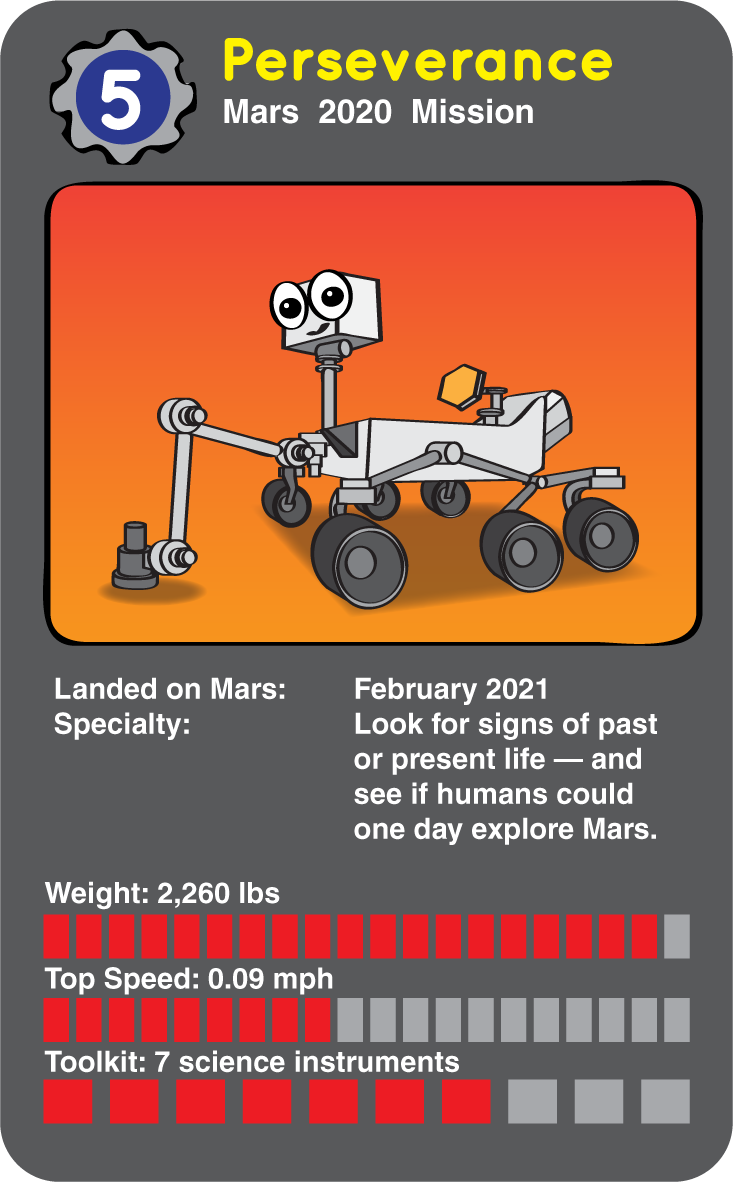What are the Mars rovers?
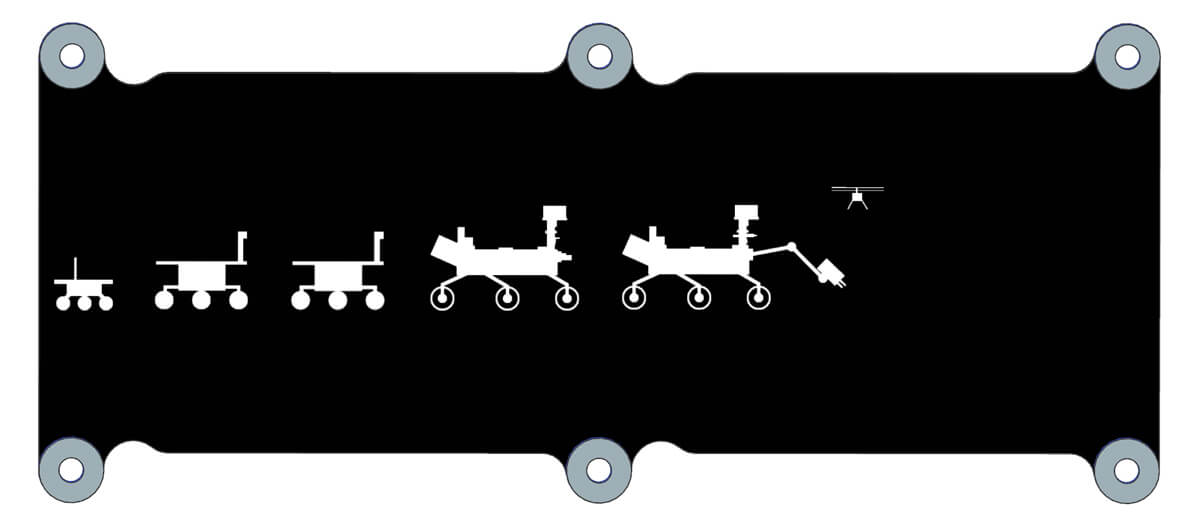
This image depicts all of the rovers which have driven on Mars, as well as the Mars helicopter. The artwork is etched onto a metal plate attached to the deck of the Mars Perseverance rover. Credit: NASA/JPL-Caltech
Mars is a fascinating planet. It’s icy cold and covered in reddish dust and dirt. Like Earth, it has volcanoes, gullies, and flat plains. Scientists can also see channels that look like they were carved by rivers and streams a long, long time ago. Over the years, we’ve sent four robotic vehicles, or rovers, to learn more about Mars. And NASA’s fifth Mars rover, Perseverance, landed on the Red Planet in February 2021!
Meet the Team:
Click on each card below to find out what we’ve learned from each Mars rover.
Why are rovers so important?
Since the 1970s, scientists have been sending spacecraft to Mars. Several different types of spacecraft have been sent to the Red Planet over the years, and they all have different specialties. One type, called orbiters, orbit Mars, taking pictures as they zoom around the planet. Other spacecraft, called landers, provide photos and information from their landing spots on the surface of Mars.
Rovers have wheels and specialize in moving around. They land on the surface of Mars and drive around to different spots.
Rovers help scientists in their quest to understand what different parts of the planet are made of. Mars is made up of lots of different types of rocks, and each rock is made up of a mixture of chemicals. A rover can drive around to different areas, studying the different chemicals in each rock. These chemicals can tell scientists something about the environments that changed that rock over time.



